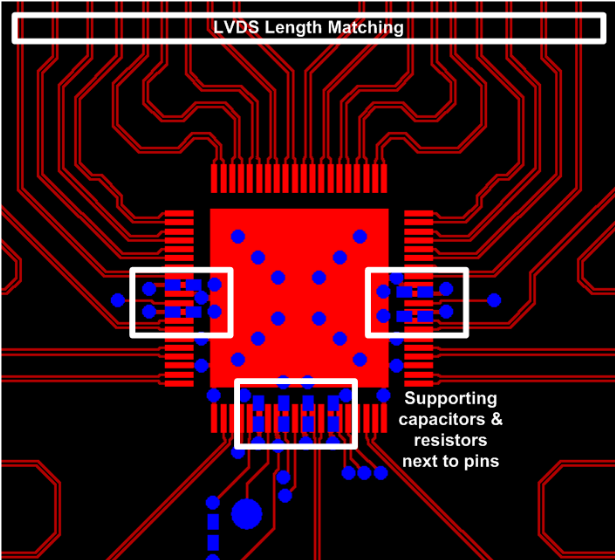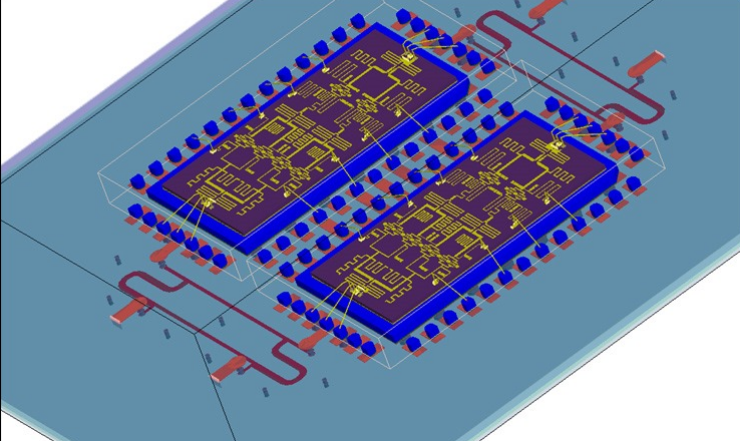1, ADS is mainly used to simulate circuits (such as: microwave RF circuits, RFIC, communication circuits), HFSS is mainly used to simulate devices (such as: filters, antennas, etc.);
1, first say the big direction, if you do the circuit, it is recommended ADS. HFSS or CST is recommended for antennas, microwave passive components, etc.
2. From the simulation results, HFSS is generally reliable in calculating the results of the electro-sulfur field. ADS is a calculation circuit or a two-dimensional semi-electromagnetic field.
3. From the perspective of electromagnetic field properties, ADS can not be used to simulate three-dimensional electromagnetic fields, and is suitable for the design of microwave high-speed circuits. The electromagnetic field simulation of such planar circuits is generally 2.5-dimensional, and HFSS is suitable for three-dimensional electromagnetic field analysis;
4. From the perspective of active passiveness of microwave devices, HFSS cannot imitate active devices, but ADS can simulate active devices;

1. CST is an emulator based on the FDID (Time Domain Finite Integration Method) electromagnetic field solving algorithm. It is suitable for simulating wideband spectrum results because only a time domain pulse can be input to cover the wide frequency band.
HFSS is an emulator based on the FEM (Finite Element Method) electromagnetic field solving algorithm. It is suitable for simulating three-dimensional complex results, but the electrical length is small.
The recommendation is to optimize the antenna using the CST design at UHF in VHF, and then refine and confirm it in HFSS.
2, from the comparison of running speed: CST speed is fast, HFSS is unsatisfactory, CST resource utilization is high, HFSS is too resource-intensive, and HFSS hurts the hard disk, it has too many temporary files to be stored on the hard disk;
3, from the simulation accuracy comparison: CST accuracy is not as good as HFSS, simulation of small objects HFSS is more accurate, CST is better for large electric objects (hfss imitation radiator is more accurate, cst imitation filter is better);
4, from the simulation width comparison: if the bandwidth is wide, cst is more convenient. Hfss imitation broadband needs segmentation, and the speed is relatively slow;
5, HFSS is relatively closed, and CST is relatively accurate
6, CST drawing is more convenient than ADS. Compared with HFSS, it feels better to simulate HFSS as an antenna. If you want to combine the circuit for system simulation, combine ADS and CST.
Third, comprehensive comparisonCST is an emulator based on the FDID electromagnetic field solving algorithm. It is suitable for simulating wideband spectrum results because only a time domain pulse is required to cover the wide band.
HFSS is an emulator based on the FEM (Finite Element Method) electromagnetic field solving algorithm. It is suitable for simulating three-dimensional complex results, but the electrical length is small.
ADS contains moment (based on the third classical algorithm-moment method), which is an electromagnetic field simulator that simplifies the third dimension. It is very suitable for simulating structures that change uniformly in the third dimension, such as circuit multilayer boards. PCB, ceramic and other circuit boards, common passive circuits, such as filters and other structures. The simulation is extremely fast and guarantees the same accuracy as HFSS. Therefore, as a board-level and IC-level circuit designer, ADS momentum is the best simulation tool, and its efficiency is far more efficient than HFSS and CST. However, if you want to simulate a non-uniformly extended structure in the third dimension, such as antennas and bond wires, you need a full-wave 3D solver.
Agilent has introduced its EMDS based on the finite element algorithm, and it is embedded in ADS. It feels very good after use and completely solves the best road simulation software ADS and full-wave 3D electromagnetic field simulator. connection. Ansoft's HFSS is no longer the only option for finite elements.

Agilent also introduced the AMDS tool based on the finite time domain difference method. It can be used for antenna simulation. Because it is heard that it is acquired, the technology is very mature. At the same time, I heard that it can also be connected with ADS. I took a trial version. For a moment, the acquisition is really mature, CST is no longer the only choice.
In short, for the three-dimensional electromagnetic field, there is no best tool. Only the user can choose the most suitable tool according to the actual needs, that is the best tool.
Summary:1. Hybrid integrated circuit design, PCB board level design, passive board level device design, RFIC/MMIC design: ADS+momentum;
2, antenna design: the first push Agilent AMDS, CAD import, modeling is very convenient, CST alternative;
3, microwave cavity, attenuator, microwave adapter, waveguide filter design, etc.: Agilent EMDS or HFSS, the best place to play the finite element method;
There is never an optimal 3D electromagnetic field tool. Only the best tools for your own products, a deep understanding of the principles of the tools, and a deep understanding of the characteristics of the products you develop are the first steps in doing a good job.
The tool is like a screwdriver. The Phillips screwdriver can't be compared with the slotted screwdriver itself, but when the electric screw on your home is a screw, even if the Phillips screwdriver is made of diamonds, it is useless.
Pcb Terminal Block,Pcb Barrier Terminal Blocks,Pcb Terminal Block Connector,Barrier Terminal Blocks And Connectors
Sichuan Xinlian electronic science and technology Company , https://www.sztmlchs.com